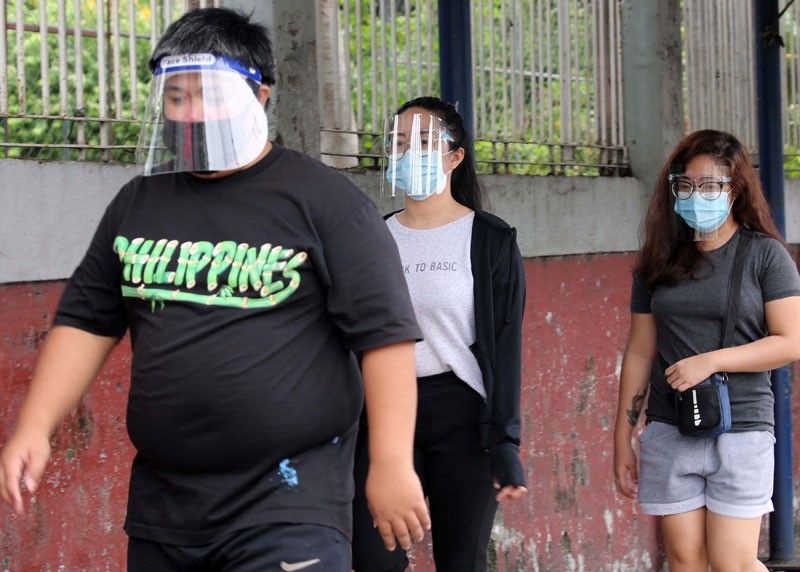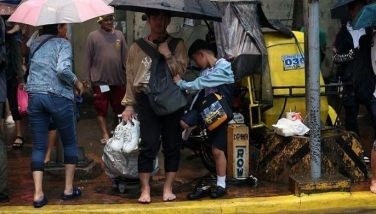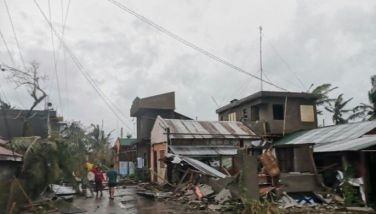No home isolation for asymptomatics

MANILA, Philippines — Home quarantine will no longer be allowed for mild and asymptomatic COVID-19 patients, except under certain conditions. Instead, they will be required to undergo quarantine in facilities accredited by the Department of Health (DOH) and local government units.
The Inter-Agency Task Force for the Management of Emerging Infectious Diseases (IATF) yesterday released the new rules through Resolution No. 74 barely a week before the government adjusts or maintains the quarantine status of Metro Manila and other parts of the country.
Mild and asymptomatic patients may be allowed home quarantine if government facilities in the region or community of residence are confirmed by the local Regional Task Force on COVID-19 to have inadequate isolation facilities.
Such patients are also exempted if they are deemed vulnerable or have comorbidities, or if their homes meet the conditions set jointly in an administrative order by the DOH and the Department of the Interior and Local Government (DILG) for serving as quarantine facility.
Patients considered vulnerable or having comorbidities include minors, senior citizens, people with underlying health conditions, pregnant women, persons with disability who cannot carry out self-care and those immune-compromised.
Resolution 74 stipulates that mild and asymptomatic patients may not be quarantined in government facilities, “where, as confirmed by the local Regional Task Force on COVID-19, the LIGTAS COVID-19 Centers within the region are fully occupied and the local government unit does not have sufficient isolation facilities.”
LIGTAS COVID-19 Center stands for local isolation and general treatment areas for COVID-19 cases.
Under the Annex F of the DOH-DILG joint memorandum, home care is allowed for mild and asymptomatic cases only if they have separate bedroom for the patient or separate bed with enough distance of more than three feet or one meter, so long as there are no vulnerable persons in the household.
The IATF had also earlier mandated that the patient should have access to a separate bathroom. If multiple bathrooms are available in the house, one bathroom should be designated for use exclusively by the patient.
A highly trained primary caregiver should remain in the residence of the patient. He or she should not be high risk for complications. Medications should be provided for pre-existing conditions.
Interior Secretary Eduardo Año lauded the IATF’s decision to ban home quarantine for COVID-19 patients, saying there are enough health facilities nationwide to accommodate them.
“Now we have plenty of experience, we know how things are done. We have new know-how so with this IATF policy, we can put an end to or reduce the number” of COVID-19 cases, Año told reporters in Filipino.
He said there are around 120,000 beds in quarantine facilities nationwide, and that even in Metro Manila – epicenter of the contagion – capacity has not been filled.
“There are many vacant facilities, and we have hotels, inns, resorts. We will utilize all of them,” he said.
If quarantine facilities in a city exceed their capacities, patients may be transferred to facilities in the nearest city. Patients cannot refuse transfer to an isolation facility.
Violators can face charges for the violation of Republic Act 11332 or the “Mandatory Reporting of Notifiable Diseases and Health Events of Public Health Concern Act” and other pertinent guidelines of the IATF.
Currently, almost 70 percent of COVID-19 cases were only made to undergo home quarantine, an arrangement that Año said may have led to the surge in community transmissions as evidenced in Laguna and Cebu.
Año also said most Metro Manila mayors want to keep their jurisdictions under general community quarantine (GCQ).
He said local chief executives are set to meet tomorrow to discuss the quarantine status which runs until the end of the month. “That’s all I can say, mayors in the NCR still want to retain the GCQ, but it all depends on the discussions on Sunday,” he said.
Another month of GCQ
Parañaque City Mayor and Metro Manila Council (MMC) chairman Edwin Olivarez earlier said that most mayors seemed open to extending the GCQ status until the end of October despite declining number of COVID-19 cases.
He said the Metro Manila Council would hold discussions and some data analysis before taking a position.
“Of course, the main concern of our mayors is the safety of their constituents. It’s not good to rush things only to feel sorry later,” Año said.
For defense chief and National Task Force against COVID-19 chairman Delfin Lorenzana, any decision on whether to ease quarantine restrictions would depend on the trend of infection toward the end of September.
“It depends on the trend from now up the end of the month. Too early to tell,” he said when asked if Metro Manila can already be placed under modified general community quarantine (MGCQ) by Oct. 1.
While he is personally optimistic of the developments, Lorenzana said each and every individual should do his share in defeating the pandemic. “We just need everyone to do his or her part,” he said.
Yesterday, the Veterans Memorial Medical Center (VMMC) received two Negative Pressure Isolation facilities from Thailand.
Lorenzana, together with the hospital’s medical director Dominador Chiong Jr. received the donation from the Thai government and some private groups, including Thai ministry of defense, armed forces, Siam Cement Group (SCG) Public Co. and Mariwasa Siam Ceramics Inc., represented by Thai ambassador Vasin Ruangprateepsaeng.
“Specially dedicated to the Veterans Memorial Medical Center, this equipment will enable life-saving services to Filipino veterans who will need care during this COVID-19 pandemic, being the most vulnerable to the virus,” Lorenzana said.
“With the number of infections having reached 32 million people worldwide, it is now more important than ever that we stand together to ensure the safety of our people,” the Thai ambassador said.
“On behalf of the Royal Thai government, I would like to reaffirm Thailand’s commitment to working closely with the Republic of the Philippines to build further upon the cooperation between us and to tackle the challenges, including the COVID-19 pandemic,” the ambassador said. – Michael Punongbayan, Romina Cabrera
- Latest
- Trending




























